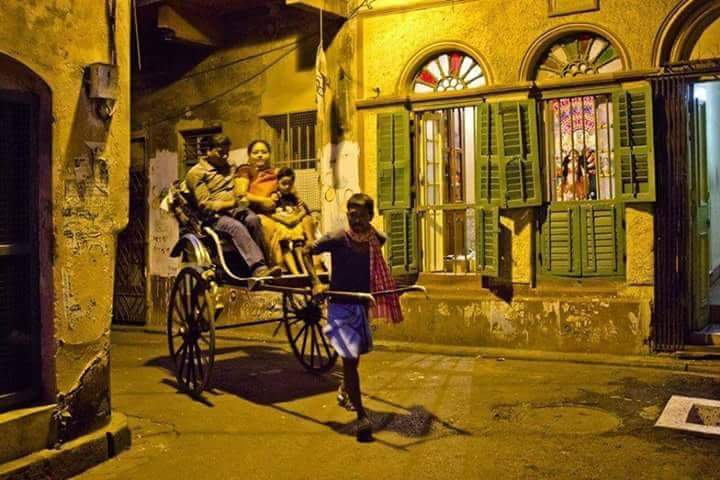The goddess of learning descended yesterday. The day is known to Bengalis as Saraswati Puja, after the name of the goddess who is worshipped on the day. The puja is performed in households, 'para's (In localities by local kids) and schools.
Valentine's Day may not be too old in Kolkata in terms of celebration. So far I remember it was popularised by Archie's and other greeting card majors in early nineties. Before that the day was not well-known. But Bengalis always had their own Valentine's Day and that was Saraswati Puja. This is the day for which many love-struck youngsters in school and college wait for months. Many of them finally succeed in expressing themselves to their loved ones- verbally or by letter, while others fail to make it for lack of confidence or other reasons. This is the day where parents give their children a free hand to spend. They are allowed to go to their school and elsewhere with their friends. Hindu schools and colleges perform the puja. Young couples (Many in their school) spend the day in gay abandon in parks, streets, theatres and other places.
The other attractions of Saraswati Puja include-
a. For children- Getting rid of studies for a full day. Even the strict parents let their children go for this one day. In all the households where this puja is performed, books are kept in front of the idol of the goddess to collect her blessings.
b. For all- Two special preparations in prasad- dadhi karma and khichudi bhog. The first is made by mixing mainly dahi (Curd), banana and rice. Some love it so much, they end up asking for a second helping though it is not generally meant for that. Khichudi bhog is the quintessential khichdi or Bengali khichudi which for strange reasons acquire a taste out of the world on this day. It is served in the puja venues post the puja, though some households do away with this custom and distribute only basic prasad of assorted fruits, dadhi karma and sweets.
c. Yellow sarees- The dress code for girls on this day. The cotton sarees wonderfully change the hue and feel of the environment. Girls who wear sarees only occasionally never miss out on it this day.
d. Hatay Khodi- The ritual of learning writing for small kids. Many of the kids are dressed traditionally and are taken to a convenient puja venue where the purohit (Worshipper) does the needful by hand-holding them to write Bengali alphabet. My two-year-and-two-months-old daughter experienced it this time. Her mother indulgently dressed her up in a kids' saree and we performed the ritual at an old household temple known as Chandibari in Chandibari Street near Sahitya Parishad Street in North Kolkata. My daughter enjoyed every moment of it and uttered every letter as guided by the old and trusted purohit. She loved the saree so much that refused to wear anything else for the rest of the day.
At this age of marketing, companies organise contests for Best Puja in schools in order to promote their brands on this popular platform of puja. Parle Saraswati Bandana is perhaps the oldest running contest in schools. Students work hard on their respective school's puja (Often working overnight before the puja day) to win prizes. In Parle's contest the winning schools are honoured in a special event with cultural extravaganza, telecast and print coverage. This puts a special honour and creates a covetability to these contests.
One change I witnessed in the various para pujas this year is that the budget is shooting up in idols. The idols are strikingly bigger. The one I saw in Brindaban Bose Lane in North Kolkata was giant. Also, as shown in Bengali television, pandals are turning 'readymade' for lack of time to devote for today's studious kids. Both are indeed significant changes. Perhaps it's the influence of the current age in which everything from a TV show to a Durga Puja pandal to a shop inauguration is trying to get bigger and better.

No comments:
Post a Comment
Please do not post any abusive comments here. All comments will be moderated before publishing.